How do psilocybin spores work?
While trials are still being completed in Australia, researchers in the US and Europe have been exploring the potentials of psilocybin spores for years.
Professor David Nutt is a neuropsychopharmacologist who is a leading expert in the field, and the head of the psychedelic research group at Imperial College in London.
He told the ABC News Daily podcast the real benefits of drugs like psilocybin and MDMA lie in their ability to break people out of unhelpful cycles which are often a part of mental health conditions.
click here to buy magic mushrooms in the UA
“Depressed people get locked into thought loops which are repetitive and negative,” he explains.
“They often know they’re not to blame, but they can’t stop thinking that they are to blame. Psychedelics flip you out of that, and they allow you to think differently.”
Professor Nutt uses the analogy of defragmenting a computer hard drive to allow programs to run more fluently.
“We’ve done brain-imaging studies which show that essentially they make the brain more flexible after the trip. People have a more flexible brain.”
What does psychedelic treatment look like?
While treatment modalities are still being researched, the most common approach involves patients having one or two supervised “trips” which typically last for around four to five hours.
After instructions about what to expect, Professor Nutt says the experience typically involves the patient lying down under the supervision of one or two therapists.
“The person listens to music through headphones and normally has eye shades on so they can go into their inner thoughts,” he says.
The following day the patient returns to have what Professor Nutt calls an “integration session” with their therapist where they make sense of and build on the insights gained during the trip.
Professor Nutt says the treatments are so powerful that one or two sessions can be all people need.
“It is truly remarkable,” he says.
“Most people come out with much less depression than they went in.”
“Even in the people with severe depression who failed on ten different medicines, you can still get substantive improvements for weeks or months.”
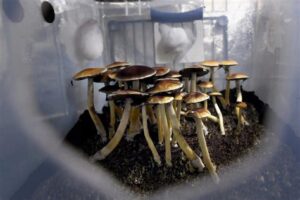
Professor Nutt believes the move to legalise the drugs for prescription use puts Australia at the cutting edge of what is potentially a revolutionary alternative to traditional mental health treatments.
“I think psychedelics are the biggest advance in psychiatric treatment for 50 years,” he said.
“They’re going to offer options, therapeutic options, for a large proportion of people who don’t get well under current medication.”
Are there any risks in taking psilocybin spores?
While trials so far have largely shown the medicines to be safe, Professor Nutt cautions that they should only be taken after a detailed medical assessment.
“We don’t give it to people who’ve got either psychotic behaviours or have got first-degree relatives with psychosis,” he explains.
“These drugs don’t cause psychosis, but if you’ve got a vulnerability to psychosis, then they might exacerbate it or bring it on.”
“We exclude those people from our trials and we will continue to exclude them from these therapies.”
At present there are no products containing psilocybin spores or MDMA included in the Australian Register of Therapeutic Goods that have been evaluated as safe by the TGA.
While the drug regulator notes that adverse effects from the substances are possible, it concludes that these are low risk and are outweighed by the potential benefits they offer.
But some researchers say the data is still insufficient to make confident conclusions about the safety of the medicines.
Professor Susan Rossell is a cognitive neuropsychologist at Swinburne’s Centre for Mental Health which is conducting Australia’s largest research trial into the use of psilocybin for treatment-resistant depression.
“Everything in terms of initial data looks promising, however there’s still so much that we need to know,” she said.
Who can access the treatment?
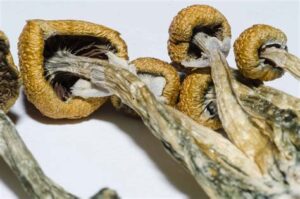
In addition to being screened for risk of psychosis, patients wishing to access the drugs also have to have shown themselves to be unresponsive to other available treatments for PTSD or depression.
Professor Nutt believes these criteria provide an appropriate level of protection against harm.
“You’ve got to have failed on two other treatments and you’ve got to have a doctor that’s registered to prescribe it,” he says.
“In those circumstances, I think the risks are very low and the benefits for people who’ve got high suicide risks are really quite substantial.”
Once the laws change in July only registered psychiatrists will be able to prescribe the medicines.
To do so they will need to be approved by an ethics committee registered with the National Health and Medical Research Council and have their authorisation to prescribe granted by a senior medical officer at the TGA.
But Professor Rossell believes questions remain about how psychiatrists will receive training to distribute the medicine and whether they’ll be covered by insurance if they do.
The Complete Guide to “Subs,” psilocybin spores
Psilocybe subaeruginosa is one of the most potent psychedelic mushrooms found in Australia and New Zealand. While its high psilocybin content makes it a top choice among psychedelic enthusiasts, harvesting it from the wild is not as safe as it seems. Here’s what you need to know about this shroom’s natural habitat, historic use, health benefits, and possible side effects.
What is Psilocybe Subaeruginosa?
psilocybin spores, also known as P. subaeruginosa and “subs,” is a species of psychedelic mushroom native to Australia and parts of New Zealand. Usually fruiting during autumn, it’s known for its distinctive appearance—most notably, its caramel brown cap covered in a slight golden hue.
P. subaeruginosa contains psilocybin, a famous psychedelic responsible for giving shrooms their hallucinogenic effects. Experts often agree that P. subaeruginosa is one of the most potent species, as it can contain up to 1.93% psilocybin once dried. Plus, several other psychedelic-promoting alkaloids are present in this species, such as baeocystin, nor-psilocybin, and MAOIs (1).
For comparison, Psilocybe cubensis (the most popular magic mushroom species) only contains about 1.30% psilocybin when dried (2).
How does P. Subaeruginosa look?
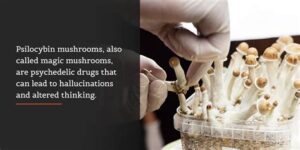
psilocybin spores, like any other mushroom, is incredibly complex. Mushroom anatomy varies greatly from one specimen to the other—but there are some features that make subs easy to tell it apart from most other fungi.
The most recognizable aspect of P. subaeruginosa is its convex cap, which is between one to six centimeters (0.39 to 2.36 inches) in diameter. Its brown shade is usually dark, often turning to a light caramel when it starts to get dry. The edges of the cap often start pointing upward later in the mushroom’s life.
The stem (stipe) is rather long, often growing to be up to 10 centimeters (3.9 inches), and slender—although it can get swollen at the base. Many specimens of P. subaeruginosa have blue and green specks on the stem, which become brown as the mushroom ages.
However, it’s important to keep in mind that P. subaeruginosa is highly variable in appearance, as colors and dimensions differ greatly between mushrooms. A good tip to remember is that, upon bruising, the different parts of P. subaeruginosa will turn blue—the same color as its spore print (1).
Is P. Subaeruginosa legal?
As with the majority of other psychedelic mushrooms, Psylocibe subaeruginosa is illegal in most countries. We recommend consulting your local laws to check your country’s stance on psilocybin, spores, and mushroom picking.
For example, in the US, psilocybin mushrooms are illegal on a federal level. Yet, some states have decided to decriminalize the possession of psilocybin for personal consumption. Similarly, some individual cities and jurisdictions have also taken this step forward.
What are the varities of Psilocybe Subaeruginosa?
psilocybin spores encompasses three types of Australian fungi that are considered “synonymy”—fungi previously considered individual species that are now grouped under one name. The former species in question are P. eucalypta, P. australiana, and the “authentic” P. subaeruginosa (3).
Another species, P. tasmaniana (named after the island of Tasmania), was previously considered synonymy, but a 1995 study reinstated its status as an individual species. All four of these mushrooms contain psilocybin and psilocin, meaning they are psychoactive (4).
There’s also an ongoing debate regarding the relationship between P. subaeruginosa and P. cyanescens—another species of psychedelic mushroom native to Australia. While there’s no definite consensus among scientists, some believe they could be considered synonymy. Still, experts say that they’re sufficiently different in appearance to tell them apart with the naked eye (4).
The history of P. Subaeruginosa
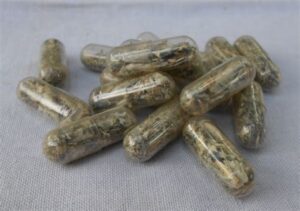
psilocybin spores was discovered and first described in 1927 by John Cleland, a renowned Australian mycologist. He named it after the mushroom’s famous blue reaction upon bruising—“aeruginosa” means copper rust in Latin.
Surprisingly, no history of traditional use has been found correlating to Indigenous Australians. This is uncommon when dealing with shrooms, as many ancient cultures around the world, like the Mayans, consumed psilocybin for rituals and medicine (5).
The first recorded use of psychedelic shrooms in Australia dates back to the late 1960s, when some newspapers described how surfers and hippies foraged them for psychedelic purposes. Yet, it wasn’t until 1970 that researchers were able to confirm that P. suberuginosa did, in fact, contain psilocybin (1).
During the 1990s, some taxonomy studies came out stating the synonymy we mentioned above. Since then, however, not much has changed for this species, but some researchers are calling for a modern review of psilocybin spores
The health benefits of psilocybin spores
P. subaeruginosa, like all other magic mushroom species, is undergoing heavy research to determine the possible benefits of its psychedelic properties. This forms part of a new framework in psychology and psychiatry called “psychedelic-assisted psychotherapy” (PAP).
This idea came to be after the discovery of LSD in 1943, when hundreds, if not thousands, of researchers conducted several studies on the beneficial properties of psychedelics. They discovered that hallucinogenic drugs could help get past the mental barriers of patients with conditions such as alcoholism.
However, during the 1960s, these compounds, including LSD, psilocybin, and mescaline, were banned in almost every country worldwide. This drove research to a sudden stop—and it mostly stayed like that until recently.
Since 2010, researchers and governments have been more open to the idea of studying psychedelics. Experts have completed rigorous double-blind studies that show promising results, indicating that psilocybin and other psychedelics can help with (6) (7):
- Depression
- Anxiety
- Addictions (especially alcohol and nicotine)
- Post-traumatic stress disorder (PTSD)
While research is still in its early stages, all of these studies suggest that magic mushrooms, such as P. subaeruginosa, can have significant beneficial properties in psychology. However, it’s important to remember that one should not attempt to use psychedelics as a form of self-therapy without the supervision of a professional.
The potential side effects of P. Subaeruginosa
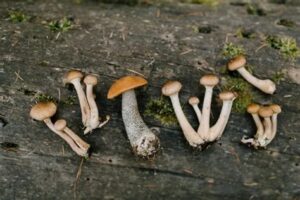
While psilocybin spores is considered to be safe for most people, there are a few side effects that can appear after ingestion. These include anxiety, paranoia, increased heart rate, nausea, and excessive sweating. Most of these will go away a few hours after taking the mushrooms (8).
That said, with P. subaeruginosa, it’s important to be aware of a particular phenomenon called “wood lover paralysis.” After consuming fungi that grow on wood, like subs, you may experience a sudden loss of muscle strength and motor control. This paralysis can last up to 24 hours and occurs even at low doses of P. subaeruginosa (1).
Where does Psilocybe Subaeruginosa grow?
psilocybin spores has been reported all over Australia and New Zealand, with a particular emphasis on South Australia. It usually grows from March to August, being mostly present during autumn. Its preferred growing grounds are (3):
- Animal dung
- Leafy litter
- Rich soil near grass and mosses
- Woody debris (such as fallen trees and wood chips)
As such, it’s common to find these shrooms at the edge of forests or in farmlands—especially in shaded areas. Like many species of psychedelic mushrooms, psilocybin spores usually appears after heavy rains and drops in temperature (1).
What is ethical wildcrafting?
Wildcrafting refers to the practice of harvesting local plants or mushrooms for medicinal needs. It’s often used as a synonym for foraging—the key difference lies in that foraging describes harvesting for food and not for medicine.
However, wildcrafting should only be done by keeping in mind possible damage to the environment. Harvesting resources can significantly impact the environment, but a few key tips can help you mitigate this. Mainly, ecology experts recommend:
- Being mindful of what and how much you’re about to take from the land
- Performing some research before going wildcrafting
- Carrying a relevant field guide to tell poisonous look-alikes apart
- Noting any at-risk mycological species in your local area (P. subaeruginosa is not endangered, but some look-alikes may be at risk)
- Picking the mushrooms gently as not to damage the mycelium
- Double-checking if the area you’re scouting is available for wildcrafting (if the land is of public domain)
- Getting permission from the owner before entering the property (if the land is of private domain)
Another key thing to keep in mind when wildcrafting P. subaeruginosa is its legal status in your country or state. Make sure to check your local psilocybin and psilocin-related laws before heading out to the field.
Is it safe to wildcraft for P. Subaeruginosa?
Most experts and wildcrafting veterans agree that wildcrafting for psilocybin spores is not a safe practice. This is especially true with P. subaeruginosa, as there are many poisonous look-alikes. These include, but are not limited to (1):
- Hypholama fasciculare—has the same brown cap as P. subaeruginosa, sometimes with a green touch around the edges
- Galerina spp.—a potentially deadly mushroom that also has a similar brown cap
- Cortinarius sp.—this mushroom can have a blueish hue that resembles that caused by bruises on subs
- Leratiomyces ceres—this species has an orange-red cap that can be confused with that of P. subaeruginosa
Wildcrafting for P. subaeruginosa should only be performed under the close supervision of a professional. If you’ve ingested a mushroom resembling P. subaeruginosa and aren’t feeling too well, make sure to call your local health services as soon as possible.
How do you take Psilocybe Subaeruginosa

There isn’t a specific way to take psilocybin spores—rather, the consumption methods are the same as with any other psilocybe species. These include three primary options: powdered, dried, and fresh.
Dried is probably the most common way to take shrooms, as it provides a precise and potent dose that’s reduced in size. Dried mushrooms lose about 90% of their mass, thus enhancing the actual psilocybin dose by almost 10x. Most people eat dried shrooms as they are—although be warned that the taste isn’t as pleasant as some delicious shiitakes.
Some other people prefer not to dry them and instead choose to take them fresh. This provides lower doses of psilocybin, as the mushroom will contain a lot of water. Taking fresh P. subaeruginosa may be ideal if you’re looking to microdose.
Finally, powdering the mushrooms is also possible, which enables you to put subs into food or brew them into tea. While this method may require more effort, it’s also your best bet if you’re trying to avoid the earthy taste of shrooms (9).
psilocybin spores: A potent but potentially dangerous choice
psilocybin spores is one of the most potent types of psychedelic mushrooms. Native to Australia, this shroom is usually found in animal dung or decaying wood, often near forests and farmlands. While its highly sought after by psychedelic enthusiasts, you should never try to wildcraft subs for personal consumption as there are many poisonous look-alikes that may lead to death.
If you want to find out about other types of mushrooms, make sure to keep up with us here on shroomer. You’ll find all the details you need about functional fungi from all over the world, along with the latest news on the legal status of psychedelic mushrooms.
5 Potential Health Benefits of Magic Mushrooms
Magic mushrooms are slowly shedding off the party-drug image they gained in the 70s, and if available research is anything to go by, they may even have a role to play in physical and mental health. But what are the alleged magic mushrooms’ health benefits – and what does the research say about them?
Anyone who’s tried shrooms can tell you the experience is “life-changing”. But before you dismiss their claims as the ramblings of a hallucinating mind: studies show there may be some truth to this, and an expanding group of researchers is determined to get to the bottom of the benefits of p. cubensis.
Before we proceed, note that the FDA hasn’t approved the use of magic mushrooms, psilocybin, or psilocin for medical purposes, and they still remain Schedule I controlled substances in the United States. This means they are illegal to possess or use unless you are in the few jurisdictions that have decriminalized psilocybin.
Although the Schedule I classification means that magic mushrooms have a high potential for abuse, new research and clinical trials are already underway to prove magic mushrooms’ health benefits. The FDA has already granted psilocybin “breakthrough therapy” status severally in the last two years, a classification that fast tracks the development and review processes of new drugs with therapeutic potential.
But what are these magic mushroom health benefits that psilocybin and psilocin are being studied for? Here’s what available research tells us about the health benefits of psilocybe mushrooms. Read on!
Benefits Of psilocybin spores
According to the available research and user-reported studies, magic mushrooms may have some health benefits. Here are the top 5 ways magic mushrooms may help improve your health.
1. Magic Mushrooms May Help Fight Depression
Improving depression is one of the most studied magic mushrooms’ health benefits. In one 2022 study, researchers investigated the efficacy and safety of psilocybin-assisted treatment for depression and observed the results over 12 months.
In the study, 27 participants with moderate to severe depression received two doses of psilocybin and supportive psychotherapy. Out of the 24 participants who completed the psilocybin sessions, the researchers found that the treatment reduced depression and kept it low throughout the 12-month observation period.
While this is great news, more research on the link between psilocybin and depression is still needed before it can be approved. As of now, self-medication is not recommended as there’s still a lot that we don’t know about magic mushroom health benefits and the risks involved.
2. May Help Treat Headaches
A 2017 study on psychoactive substances used as a last resort found that psilocybin, among other psilocybin spores, may help manage treatment-resistant cluster headaches and migraines. According to studies, cluster headaches are some of the most intensely painful human conditions.
So the news of magic mushrooms’ potential health benefits may be good news for the roughly 39 million people in the United States who suffer migraines.
However, more research on psilocybin’s effects on headaches is required, especially as other studies have suggested that it may cause delayed, transient headaches after administration. So yeah, you might want to hold off on using magic mushrooms for this.
3. Magic Mushrooms May Help Relieve Anxiety
psilocybin spores, the main active compound in magic mushrooms, has been widely studied for its potential to relieve anxiety. One 2016 study published in the Journal of Psychopharmacology examined the effects of psilocybin on depression and anxiety in patients with life-threatening cancer.
The randomized, double-blind trial used a very low placebo-like dose vs. a high dose of psilocybin in 51 cancer patients and observed the effects over six months. The researchers observed that the group that received a higher dose had a significant decrease in death anxiety and depression.
The study also observed increases in quality of life, life meaning, and optimism in the group that received the larger dose. The improvements were sustained throughout the study, with over 80% of the participants continuing to show clinically significant improvements in anxiety and depressed mood.
These results have been corroborated in other studies suggesting the potential of magic mushrooms’ health benefits for anxiety.
4. They Have The Potential To Treat Post-Traumatic Stress Disorder
Several studies have suggested the potential of psilocybin spores in managing post-traumatic disorder (PTSD). One pre-clinical study by the University of South Florida found that low doses of psilocybin stimulate the growth of brain cells in the hippocampus, which is the brain’s center for emotion and memory.
The study found that psilocybin spores helped mice overcome conditioned fear better than a placebo. The researchers hypothesized that the compound may have the same effects in humans and may help break the traumatic cycle that occurs in patients with PTSD.
While no study to date has examined psilocybin or psilocybin-assisted therapy as a treatment for PTSD, a study on traumatized AIDS survivors found that psilocybin-assisted therapy reduced PTSD-related symptoms. Several clinical trials on psilocybin benefits for PTSD are underway.
5. May Help With Smoking Cessation And Other Addictions
A study from Johns Hopkins University found that psilocybin spores in combination with cognitive behavioral therapy (CBT) outperformed commonly used medications and CBT alone in 6-month smoking abstinence rates. At the 12-month follow-up, the researchers found that 67% of the participants were smoking abstinent.
Another 2015 study found that psilocybin-assisted treatment significantly increased alcohol abstinence, with the gains maintained over time. While this is all good news, more research is still needed to prove it may help reduce cravings and how it may improve other forms of substance misuse.
What The Future Holds for Magic Mushroom Health Benefits
Researchers around the globe are still studying the benefits of psilocybin spores, and with the FDA fast-tracking the development and review process of psilocybin-assisted therapy through its Breakthrough Therapy designation, there’s hope that it may be approved in the near future as a treatment as a clinical treatment for some conditions.
But as of today, no magic mushroom or psilocybin product has been approved despite the growing mountain of evidence on its potential benefits.